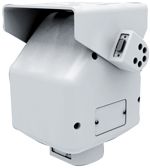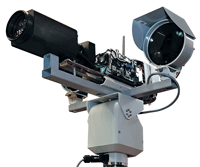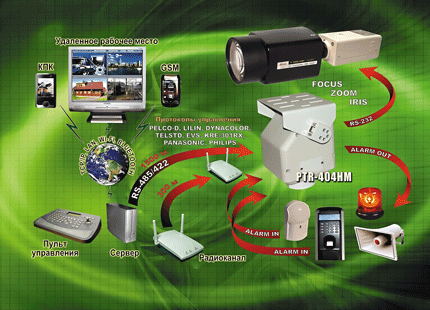
#Lens, #Lens for video surveillance
Lens for video surveillance.
Modern technical means allow surveillance from anywhere in the world with automatic analysis of received video information and timely decision-making in case of alarming situations.
The range of tasks solved with the help of television systems is constantly expanding, which encourages developers and manufacturers of such equipment to create new technical solutions.
Fortunately, the market for technical security equipment is one of the most dynamically developing.
In our opinion, the promising areas for the development of this industry are:
— creation of long-range television surveillance systems for detecting emergency situations and alarming events at geographically distributed sites (reservoirs, forests, etc.),
— use of multi-megapixel cameras for photo and video recording with high image quality,
— development of digital and computer technologies for the formation, transmission, recording, viewing and management of flows of received video information,
— development of algorithms and programs designed to process and analyze video information to solve various problems — detection and identification of objects, pattern recognition, event registration, control, etc.
One of the most important components of any television system is the lens, which primarily determines the quality of the formed image.
The market for technical equipment designed for television surveillance offers a huge variety of lenses — from the simplest small-sized «Board» type to complex and expensive optical systems with remote control.
The purpose of the TV camera and its operating conditions determine the priority requirements for both the characteristics of the lens and its functional capabilities.
Changing in space (direction and distance to the observed object) and time (during round-the-clock surveillance) observation conditions (lighting) lead to the need to change both the direction of the TV camera and adapt its characteristics.
The direction of the TV camera, depending on the position of the object relative to the observation point, can be changed using a rotary device.
The size of the observed scene (the camera's field of view) depends on the distance from the observation point to the object, the focal length of the lens, and the physical size of the TV camera's photoreceiver. When the distance to the object changes, it becomes necessary to quickly change the focal length of the lens in order to maintain the image scale.
A change in the illumination of the observed scene by more than 1000 times leads to the need to regulate the amount of light falling on the TV camera's photoreceiver using the lens diaphragm.
The range of lens diaphragm change determines the illumination range at which the TV camera operates.
According to the method of diaphragm control, there are lenses:
— with a fixed diaphragm;
— with manual (mechanical) diaphragm adjustment;
— with automatic diaphragm adjustment (ARD);
— with a motorized drive of the diaphragm unit.
In some cases, it may be necessary to fix the diaphragm in a given position with remote control. The operating mode that allows such control is called «OVER-RIDE».
When the illumination of the observed scene is low (at night), additional illumination may be required using lighting devices operating both in the visible and infrared spectrum.
In this case, it is necessary to change the spectral characteristics of the TV camera, that is, the wavelength range in which it can operate.
For example, a camera with a day-night mode with a mechanism for moving the filter that cuts off the infrared region is capable of operating in the visible spectrum during daylight hours, and using infrared illumination at night.
Such a mechanism can be built into both the camera and the lens. The lens must have so-called infrared correction, allowing observation when the spectral composition of the lighting changes without loss of clarity and without additional focusing.
All this is reflected in the technical requirements for the lens, which must provide the ability to remotely control the image scale, adjust the light flux to the camera's photoreceiver, and operate in the visible and near-infrared spectral region without loss of quality.
Let's consider some of the features associated with the control of such lenses, as well as modern positioning systems that can significantly expand the functionality of surveillance systems.
In terms of controllability, all lenses with variable focal length can be divided into groups that differ in functionality, focal length range, weight, size and, accordingly, purpose and area of application.

Varifocal lenses with automatic aperture control (ARD)
Adjustment of such lenses is reduced to their installation on the TV camera so that they can be focused over the entire range of focal lengths, adjustment of the ARD control signal on the camera, selection of the scale (focal length) and focusing on the observed object with the aperture fully open (with minimum depth of field).
In this case, it is impossible to quickly change the image scale. As a rule, such lenses are used in stationary cameras.
Lenses that are called «Pan Focus»
They are a budget version of the «Motor ZOOM» type lenses. The main difference of these lenses, which limits their applicability and, as a consequence, is their disadvantage, is the lack of a focus control unit.
However, the presence of a motorized zoom control drive allows you to quickly change the scale of the observed scene from a remote control.
Focusing of a TV camera with such a lens is performed by mechanical convergence (focusing) at a fixed distance. The main advantage is low cost.
Modular and housing motorized zoom lenses
They are a complete product combined with a camera with an integrated telemetry control unit. They are usually used in dome rotating cameras of the «Speed Dome» type.
They are compact and have high scaling and focusing speed. Modern models have an automatic focusing mode and a Day-Night mode with mechanical movement of the optical filter that cuts off the infrared region.
Remote control of such cameras is most often carried out via a 2-wire line with commands transmitted via RS-232 or RS-422/485, from a remote control panel using the selected protocol.
The use of such modules requires minimal costs for connecting to the control line and selecting the protocol. The consequence of compactness is relatively low sensitivity due to the small format of the camera's photoreceiver.

Large-format motorized zoom lenses
These are lenses with an image format from 1/3” to 1 inch with a focal length of up to 1000 mm and more of various magnification and aperture ratio.
The large difference in focal length and aperture ranges, and, as a consequence, in overall dimensions, weight, and cost, requires an individual approach to each model.
The peculiarity of such lenses is that, provided that the lens and camera are mechanically coupled (converged), it is focused at a selected distance over the entire range of focal lengths (without the need for additional focusing).
Focusing in this case is performed only when the observation distance changes.
For operation in difficult climatic conditions, a TV camera with a zoom lens is placed in a protective casing, the design of which must provide the necessary conditions for them — protection from the effects of the external environment and temperature conditions.
The sensitivity of a TV camera depends on the format of the photoreceiver and the aperture ratio of the lens, therefore high-sensitivity television systems are distinguished by large dimensions and weight.
Such a camera can be installed on a separately purchased PTZ device, which allows for surveillance of large areas.
In most cases, zoom control (ZOOM) and focus (FOCUS) of zoom lenses are performed using DC electric motors.
The disadvantage of such motors is their low speed and narrow range of change.
When constructing high-precision high-speed rotary television surveillance systems based on optical zoom lenses, it is necessary to have a variable rotation, tilt, zoom and focus speed according to a given algorithm depending on the camera viewing angle.
In this case, preference should be given to stepper motors, the speed of which can not only be changed within a wide range, but also controlled.
Integration of a camera with an optical zoom lens on a PTZ device significantly increases the functionality of the video surveillance system.
A PTZ TV camera with an optical zoom lens in normal mode can operate autonomously according to a specified algorithm, respond to the triggering of alarm sensors, and notify security in the event of unauthorized actions.
The position sensors of the motorized drives allow the PTZ camera to operate according to pre-set positions and routes, for example, during autonomous patrolling, triggering of alarm sensors, etc.
The PTZ camera is controlled using a telemetry control unit, which can be implemented as a separate module or integrated into the PTZ device itself.
In the case of using IP technologies, the PTZ camera can be controlled by transmitting control protocols over a TCP/IP network to a remote server, which eliminates the need for additional control signal transmission and reception lines.

The following can act as a server:
— the server of the IP camera itself;
— an IP server made as an independent product;
— an IP server integrated into the telemetry control unit of the positioning device.
The high cost of such imported rotary devices presented on the Russian market limits their applicability.
Which causes increased interest in domestic rotary devices with similar characteristics that already exist.
In conclusion, we note that the rapid introduction and development of digital methods of information transmission using computer networks, the Internet, mobile and satellite communications make it possible to carry out video surveillance from anywhere in the world using PTZ cameras with optical zoom lenses.

Добавить комментарий